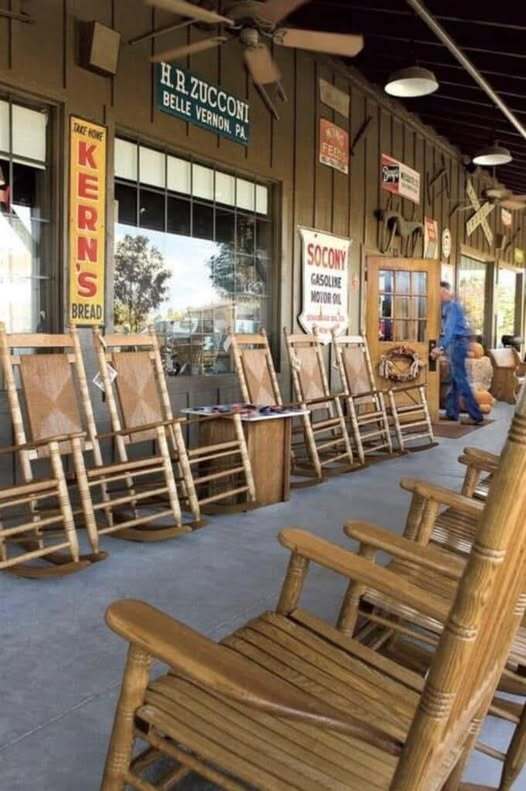For decades, Cracker Barrel has been more than just a roadside restaurant — it’s a slice of Americana. With its rocking chairs lined up on wooden porches, old-fashioned country store, and comforting aroma of biscuits and gravy, it’s the kind of place that makes you feel like you’ve stepped back in time. Millions of travelers have made Cracker Barrel a family tradition, but what most people don’t realize is that this cozy stop hides fascinating secrets in plain sight.
Let’s start with the décor — that warm, nostalgic clutter that fills every wall and corner. Every Cracker Barrel restaurant looks a little different, yet feels exactly the same. That’s no accident. In fact, every single item hanging on those walls — from antique photos to vintage tools — is real. Not replicas, not mass-produced decorations. Cracker Barrel actually employs a full-time team of historians and antique experts who scour flea markets, auctions, and small towns across America to find authentic pieces of history.
Each restaurant is individually designed with about 1,000 genuine artifacts, and no two are exactly alike. You might find a hand-crank washing machine in one, or a Civil War-era quilt in another. The design team stores more than 700,000 items in a massive Tennessee warehouse, known internally as the “Cracker Barrel Décor Warehouse.” Before a new restaurant opens, designers handpick items to match the region’s local flavor and history. So if you’ve ever wondered why the décor feels like a walk through your grandparents’ attic — that’s exactly the point.
And here’s another secret: the name “Cracker Barrel” itself has deep roots in old American culture. Back in the 1800s, general stores often kept barrels of soda crackers near the front. Locals would gather around them, sharing gossip and swapping stories — a literal “cracker barrel conversation.” That sense of community is what founder Dan Evins wanted to recreate when he opened the first Cracker Barrel in Lebanon, Tennessee, in 1969.
Evins, who worked for Shell Oil at the time, noticed that highways were changing America. People were traveling farther, faster — but losing the warmth of small-town hospitality. So he built a restaurant that would bring that feeling back, where travelers could eat, rest, and talk — all while surrounded by pieces of America’s past.
Now, if you’ve ever ordered a breakfast there, you’ve probably noticed something else unusual: the menu hasn’t changed all that much. While most restaurants chase trends, Cracker Barrel prides itself on consistency. Dishes like chicken and dumplings, country fried steak, and those famous buttermilk pancakes have stayed on the menu for decades. But here’s what most guests don’t know — many of the recipes still come from handwritten notes passed down through families of the restaurant’s original cooks. Some dishes even use ingredients sourced from small American farms the company has worked with for generations.
Then there’s the gift shop — part nostalgia museum, part treasure chest. It wasn’t just added for charm. In fact, Cracker Barrel’s founder included it from day one as a financial safety net. The gift shop’s steady revenue helped the restaurant stay profitable even during slow dining seasons. Today, the retail section brings in nearly 20% of the company’s overall income — one of the reasons Cracker Barrel continues to thrive while so many others have faded away.
But perhaps the most touching secret of all is one few people notice: the porch rocking chairs. Each one is handmade by the Hinkle Chair Company — a family business in Springfield, Tennessee, that’s been crafting them for Cracker Barrel for over 40 years. Every chair is hand-inspected and painted, built to last for decades, and thousands of guests have bought their own to take home — turning a restaurant symbol into a piece of personal comfort.
So the next time you stop by Cracker Barrel — whether for a plate of biscuits or a few minutes in that wooden rocker — take a closer look around. Every photo, every pan, every knickknack tells a story. Behind the comfort food and country charm lies a living museum of American history — a quiet reminder that sometimes, the places we take for granted hold more secrets than we ever imagined.
And once you see it, you’ll never walk through those front doors the same way again.

Leave a Reply